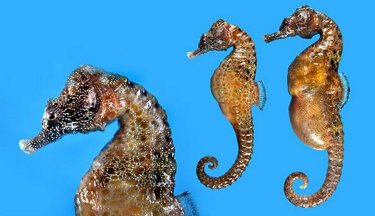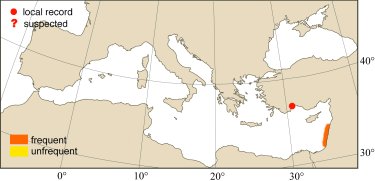
|
Relevant synonyms
Misidentification
Meristic formula
|
|
| photo : David Darom |
|
SHORT
DESCRIPTION
color :
variable according to background, from brown with delicate white spots to lemon yellow.
size :
3-14 cm (max. 15 cm). |
DISTINGUISHING CHARACTERISTICS
BIOLOGY / ECOLOGY
habitat :
usually found up to 10 m, on stones and gravel, as well as on artificial constructions. Often in harbors and bays in relatively calm waters. |
|
1st
MEDITERRANEAN RECORD
|

|
|
DISTRIBUTION
|
ESTABLISHMENT SUCCESS
speculated reasons for success :
|
|
|
MODE OF
INTRODUCTION |
IMPORTANCE TO
HUMANS |
|
KEY
REFERENCES
|
|